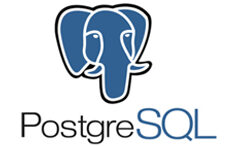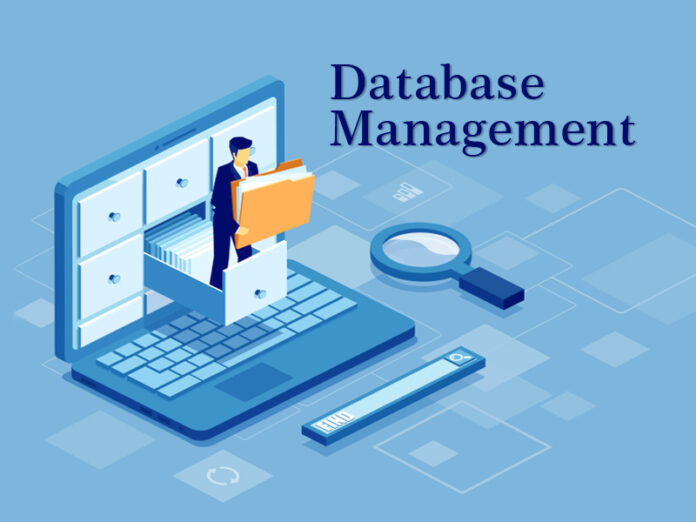After coding your perfect website or application, you must be wondering what should be the best way to keep the data from your application safe and easily accessible. If this thought has not come to your mind, then please continue to go through this article for the sake of your precious data.
A brief introduction to the significance of a Database
Let us explain to you what is the significance of a database. So let’s say you have registered for some examination. Now, these details need to be saved for future use and since it has your private details, it needs to be saved securely. Here the databases come into the picture to save your data securely for future use and you can access it whenever you want. Now for your website or any application which you have created, you might need a database for saving the data securely.
So you need not worry about it because we have kept you covered. This article helps you to decide from various databases to select the ideal database for your website/application and how to store the data efficiently in your Database. So let’s begin to get a brief introduction to the most sought-after databases.

MySQL

It is a relational database management system (RDMS) based on SQL ie Structured Query Language. Now you must be thinking about what this RDMS means. Let us help you with that, RDMS means organizing data into ‘n’ number of data tables in which data might be related to each other, and SQL on the other hand is a language we use to create, modify and extract data from the relational database, as well as control user access to the database. It also works with an operating system to implement a relational database in a computer’s storage system, manages users, allows for network access, and facilitates testing database integrity and the creation of backups. It runs on Linux, Windows, OSX and FreeBSD, and Solaris. The open-source GPL license allows programmers to modify the MySQL software to fit their specific environments.
In MySQL, you can create the data in a structured way in the form of data tables and you can fetch the data from these tables using query commands. It supports large databases like up to 50 million rows or more in a table. The default file size limit for a table is 4GB, but you can increase this. MySQL is also used by many popular websites, including Facebook, Flickr, MediaWiki, Twitter, and YouTube. It is an appropriate language to begin your database knowledge on database management.
You can go through the below link for more information:
Oracle

Although MySQL is a very efficient and easy-to-understand database it can only store structured data like numbers and values. But in today’s social media world, we are full of unstructured data like images, audio, videos, etc. We can’t store such data using MySQL.
In the case of the Oracle database, the collection of data is treated as a unit and can help in maintaining unstructured data. This database stores and retrieves related information. It helps in solving the problems of information management. In general, a server reliably manages a large amount of data in a multiuser environment so that many users can concurrently access the same data. All this is accomplished while delivering high performance. It also prevents unauthorized access and provides efficient solutions for failure recovery.
This database is the first database designed for enterprise grid computing, the most flexible and cost-effective way to manage information and applications. Enterprise grid computing creates large pools of industry-standard, modular storage, and servers. With this architecture, each new system can be rapidly provisioned from the pool of components. There is no need for peak workloads because capacity can be easily added or reallocated from the resource pools as needed. The database has logical structures and physical structures. Because the physical and logical structures are separate, the physical storage of data can be managed without affecting access to logical storage structures. Although it is a bit more costly than other databases, If the efficiency of a database is in your mind, then the Oracle database is the ideal option for you.
You can go through the below link for more information:
https://www.oracle.com/in/database/
MongoDB

Now coming to the next database in our list, we can have a look at MongoDB as another proficient database for your application. MongoDB or the database for modern applications is a source-available cross-platform document-oriented, NoSQL database program. MongoDB uses JSON-like documents with optional schemas. MongoDB is developed by MongoDB Inc. and licensed under the Server Side Public License. MongoDB supports field, range query, and regular expression searches.
Queries can return specific fields of documents and also include user-defined JavaScript functions. It can also be configured to return a result according to your requirement. MongoDB has the flexibility of indexing the document to primary and secondary indices. MongoDB provides high availability with replica sets. A replica set consists of two or more copies of the data. Each replica set member may act in the role of the primary or secondary replica at any time. All writes and reads are done on the primary replica by default. Secondary replicas maintain a copy of the data of the primary using built-in replication. When a primary replica fails, the replica set automatically conducts an election process to determine which secondary should become the primary. Secondary ones can optionally serve read operations, but that data is only eventually consistent by default. It also has efficient load balancing and file storage.
Companies and development teams of all sizes use MongoDB because the document data model is a powerful way to store and retrieve data that allows developers to move fast. Hence in that case MongoDB can be an ideal choice for the database.
You can go through the below link for more information:
PostgreSQL

This database is claimed as The World’s Most Advanced Open Source Relational Database. PostgreSQL is a powerful, open-source object-relational database system. This 30-year-old database system has earned a strong reputation for reliability, feature robustness, and performance. It is easy to install and there is a lot of documentation available to help you guide through this database.
Let us go through some of its other features like data integrity and building fault-tolerant environments. It can help you manage your data no matter how big or small the dataset. It is highly extensible also, as you can define your data types, build out custom functions, and even write code from different programming languages without recompiling your database. Most of the SQL standard features are also compatible with PostgreSQL but with slightly differing syntax or function. With the immense amount of documentation available to gain your knowledge on this DB system, you can pursue using PostgreSQL for your application.
You can go through the below link for more information:
Cassandra

We have added one more NoSQL database to the list, for you to compare both and make a wise choice. Cassandra is also a free and open-source, distributed, wide-column store, NoSQL database management system designed to handle large amounts of data across many commodity servers, providing high availability with no single point of failure.
Cassandra offers robust support for clusters spanning multiple data centers. And its asynchronous masterless replication allows low-latency operations for all clients. Cassandra. The Apache Cassandra database is the right choice when you need scalability and high availability without compromising performance. Linear scalability and proven fault tolerance on commodity hardware or cloud infrastructure make it the perfect platform for mission-critical data.
Cassandra’s support for replicating across multiple data centers is best-in-class, providing lower latency for your users and the peace of mind of knowing that you can survive regional outages. Some of the main features of Cassandra are, It is distributed which means every node in the cluster has the same role. There is no single point of failure. Data is distributed across the cluster (so each node contains different data), but there is no master as every node can service any request. It supports replication and multi-datacenter replication which we have discussed above as well.
It is Scalable and Fault-tolerant. It is designed to have read and write throughput both increase linearly as new machines are added, with the aim of no downtime or interruption to applications, and data is automatically replicated to multiple nodes for fault tolerance. Replication across multiple data centers is supported. Failed nodes can be replaced with no downtime.
Cassandra also has Hadoop integration, with MapReduce support. There is support also for Apache Pig and Apache Hive. Cassandra has also introduced a language for easy access to the Cassandra database, very similar to traditional SQL. CQL adds an abstraction layer that hides implementation details of this structure and provides native syntaxes for collections and other common encodings. Cassandra is being used by some of the biggest companies such as Facebook, Twitter, Cisco, Rackspace, eBay, Twitter, Netflix, and more. So if you are planning to work on clusters of a node or heavy write workloads, then Cassandra can be perfect for you.
You can go through the below link for more information:
https://cassandra.apache.org/doc/latest/
With this list of the 5 most sought-after database systems, you can make a wise decision as to which one to go for. Database management can be a little troublesome but with either of these Database management systems, you can manage your data very efficiently. You just have to go through the documents available on the internet or their websites as well.
We hope this article was of some help to you and we would be very happy to share this knowledge with you.
READ MORE: The top 5 languages for Website Development
If you like our article, please subscribe to BsyBeeDesign for the latest updates on design. If we forget anything, share your creative ideas in the comments section.
Follow us on Facebook & Instagram.


































